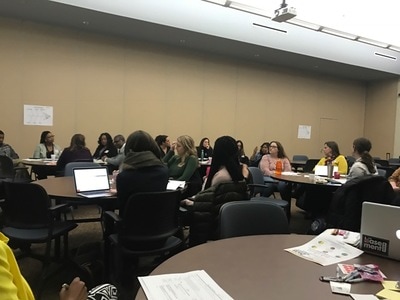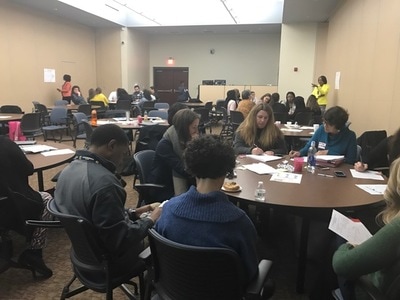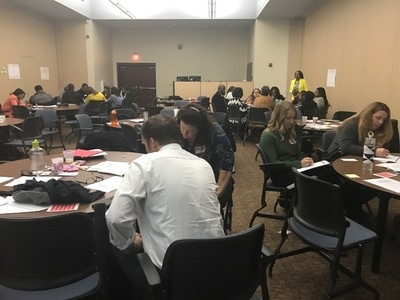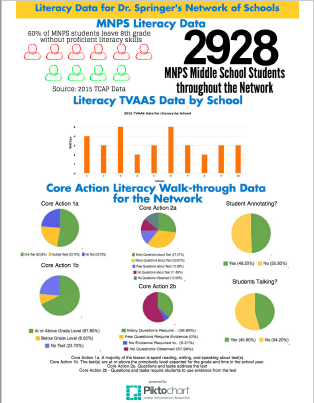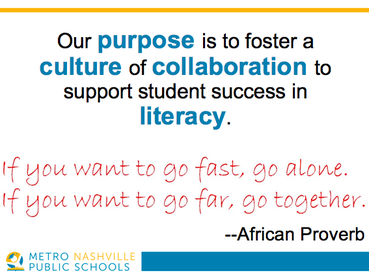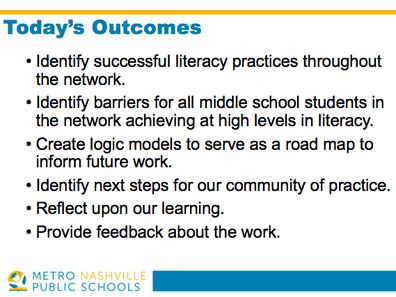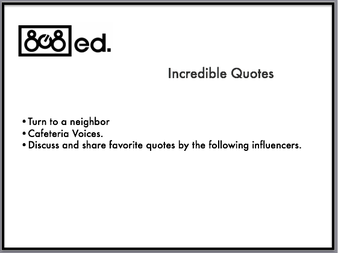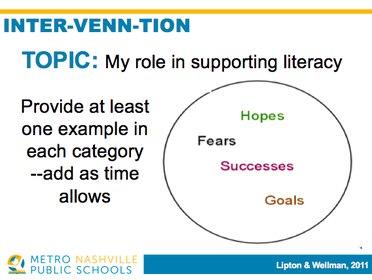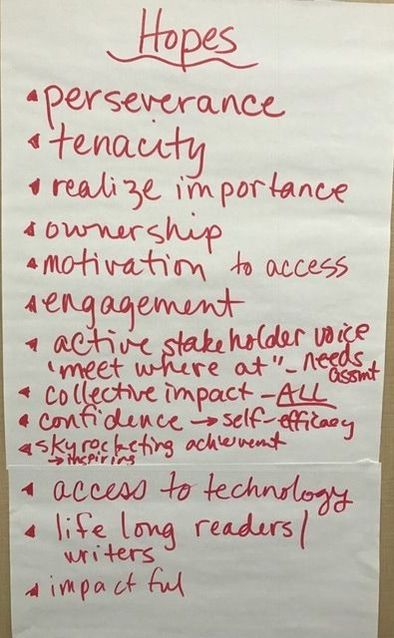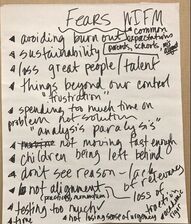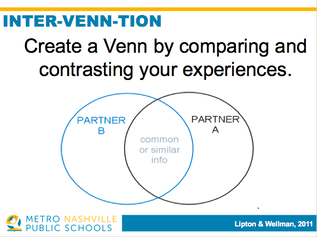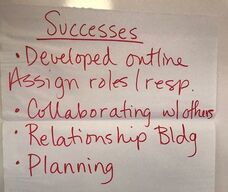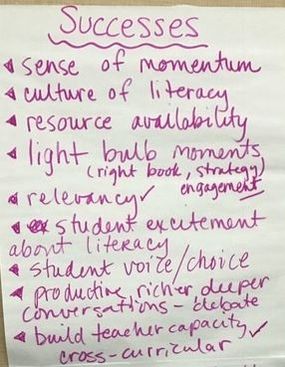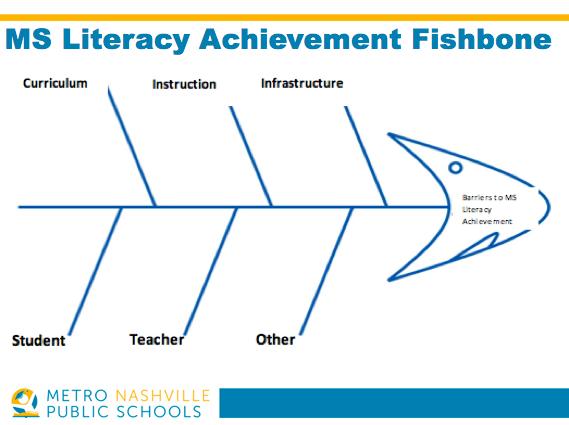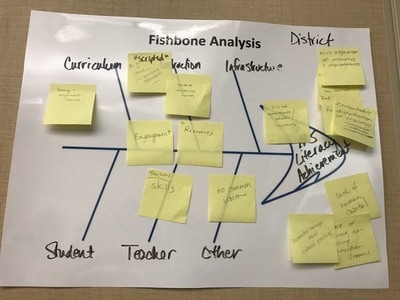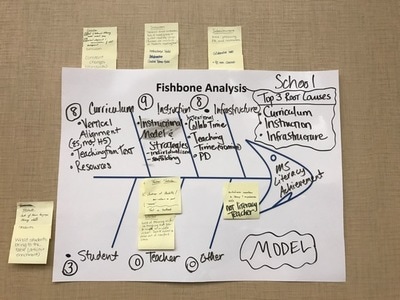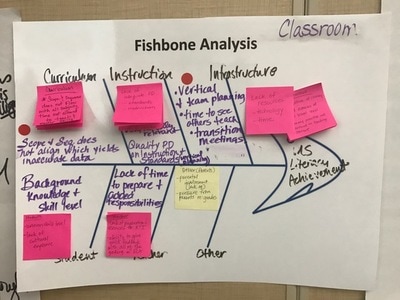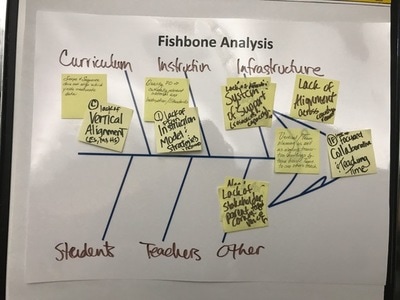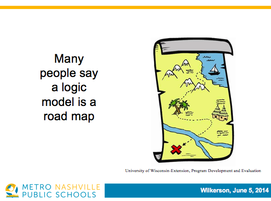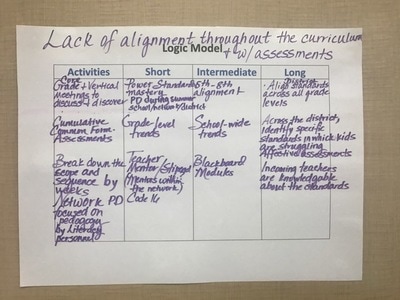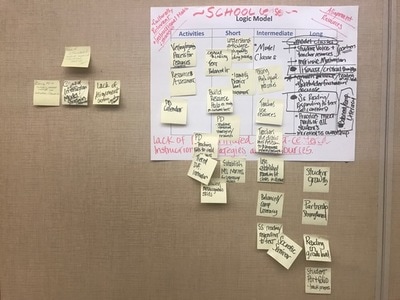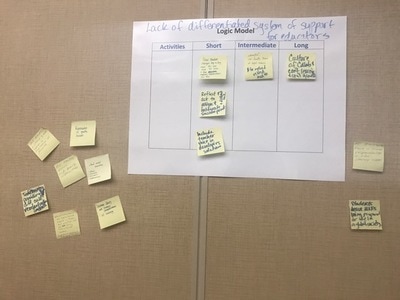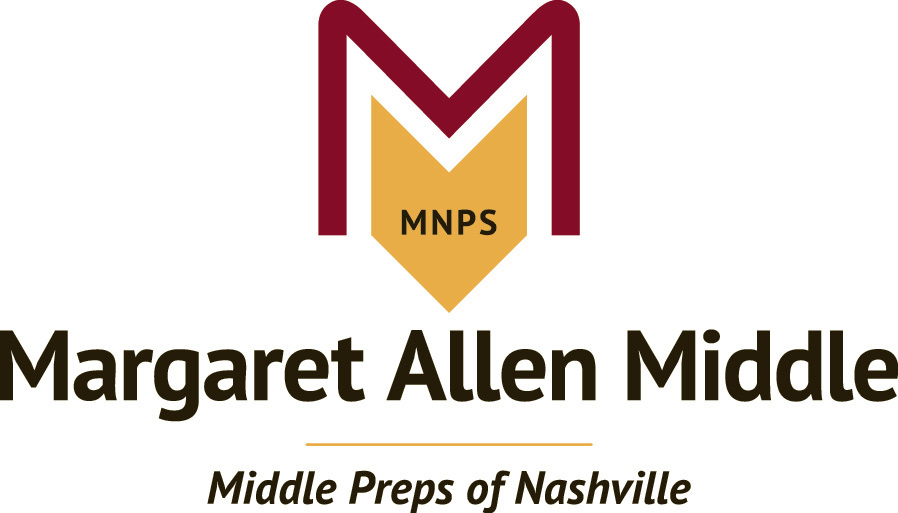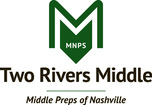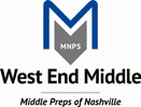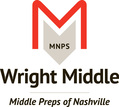Dr. Springer Literacy Community of Practice (CoP)
On January 24, 2017, Dr. Michelle Springer convened a variety of stakeholders, school network, central office, high school, and community partner representatives to participate in a deep conversation around middle school literacy achievement for her network. The collaborative inquiry process was used to facilitate the conversations.
| literacy_cop_1.24.17.pptx |
Begin with What, Why, How
|
One strategy we learned about leading collaborative teams is to always start with the what, why, and how. Dr. Springer did just that when she kicked off the meeting with the purpose, using an infographic for the why, and using the collaborative inquiry process for facilitating the conversations for the day.
| |||
Community Builder by Norman Merrifield
|
Norman Merrifield from 808ED (http://www.808ed.com/) facilitated us getting to know one another and starting to discuss why literacy is important. This part of the session helped to develop psychological safety for the community of practice to then have deeper conversations later in the day.
If you are interested in accessing free lesson plans, check out his website at http://www.808ed.com/blog/. |
Inter-VENN-tion
Dr. Margie Johnson facilitated participants identifying and sharing the Hopes, Fears, Successes, and Goals for supporting literacy. This discussion served as a springboard for the discussion about Shifting the Narrative "from 'fixing the teacher' to collaborative expertise" (Hattie, 2015, p. 5)
Fishbone Analysis
|
After a short break, the CoP divided into three smaller groups, district, school, and classroom perspectives, to take a deeper dive into identifying barriers to middle school literacy achievement in Dr. Springer's network. Stephanie Adams, SIP Facilitator, facilitated the Classroom fishbone analysis; Dr. Michelle Springer facilitated the School fishbone analysis; and Dr. Margie Johnson facilitated the District fishbone analysis.
Then, the groups convened to identify the top 3 barriers, which were:
|
Lunch Sponsored by Montage Education
Aha Moments
What is an aha point or personal connection you are making from the session?
|
|
Draft Logic Models
|
A tool used to address barriers is called a logic model. A logic model first identifies the long term, or ideal, outcome and them backwards map to develop a road map for removing the barriers.
Again, three smaller teams were formed and facilitated by Stephanie Adams, Dr. Michelle Springer, and Dr. Margie Johnson. While we ran out of time, the draft logic models can be accessed below. Volunteers were added to the planning team and evaluation planning team as the work continues. | ||||||
Next Steps
|
|
Exit Ticket Reflection
Reviewing your Inter-VENN-tion goal from this morning, what is your goal now for supporting literacy?
|
| ||
Meeting Feedback
Plus
|
Suggestions for Improvement
|
|
|
